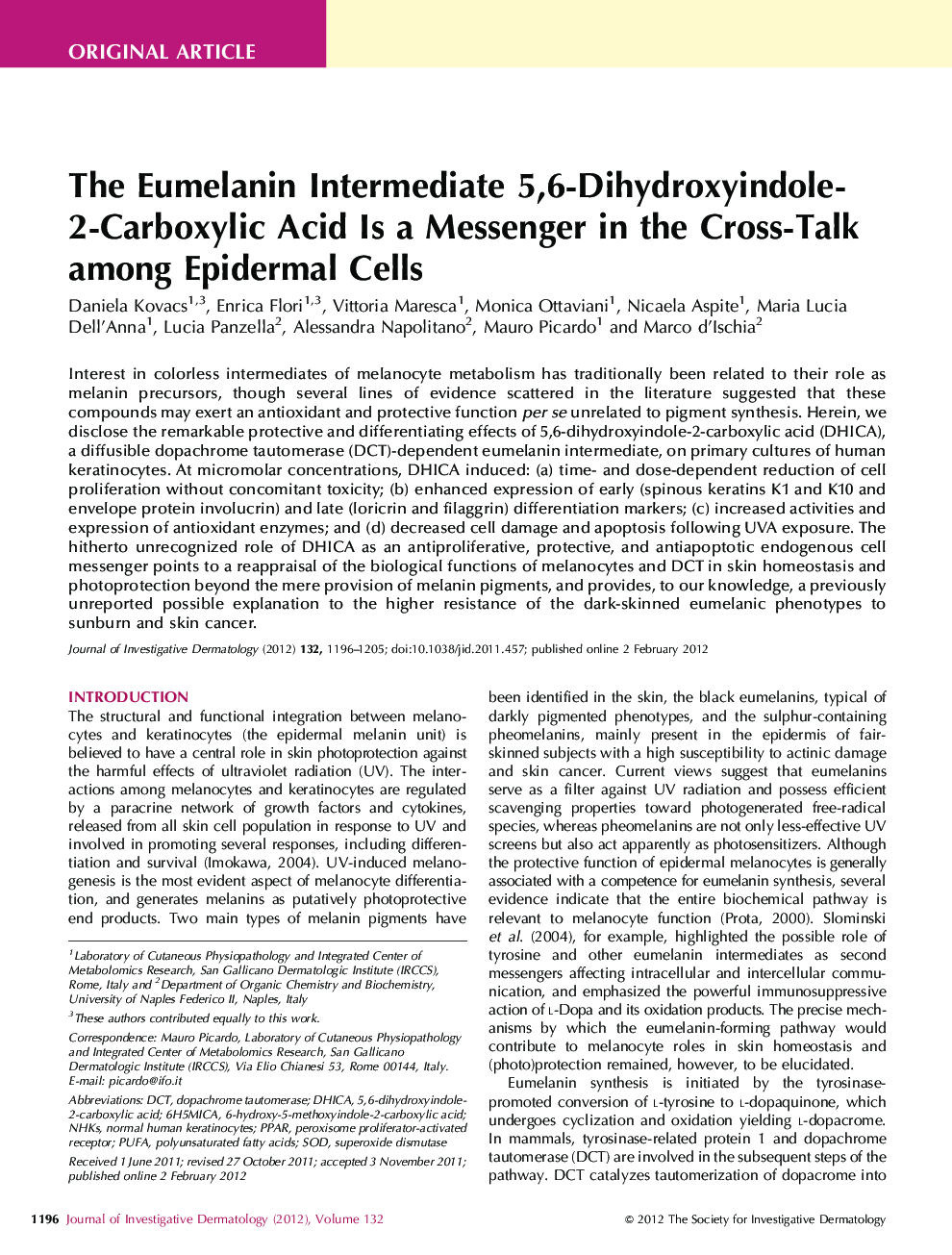| Article ID | Journal | Published Year | Pages | File Type |
|---|---|---|---|---|
| 6078131 | Journal of Investigative Dermatology | 2012 | 10 Pages |
Abstract
Interest in colorless intermediates of melanocyte metabolism has traditionally been related to their role as melanin precursors, though several lines of evidence scattered in the literature suggested that these compounds may exert an antioxidant and protective function per se unrelated to pigment synthesis. Herein, we disclose the remarkable protective and differentiating effects of 5,6-dihydroxyindole-2-carboxylic acid (DHICA), a diffusible dopachrome tautomerase (DCT)-dependent eumelanin intermediate, on primary cultures of human keratinocytes. At micromolar concentrations, DHICA induced: (a) time- and dose-dependent reduction of cell proliferation without concomitant toxicity; (b) enhanced expression of early (spinous keratins K1 and K10 and envelope protein involucrin) and late (loricrin and filaggrin) differentiation markers; (c) increased activities and expression of antioxidant enzymes; and (d) decreased cell damage and apoptosis following UVA exposure. The hitherto unrecognized role of DHICA as an antiproliferative, protective, and antiapoptotic endogenous cell messenger points to a reappraisal of the biological functions of melanocytes and DCT in skin homeostasis and photoprotection beyond the mere provision of melanin pigments, and provides, to our knowledge, a previously unreported possible explanation to the higher resistance of the dark-skinned eumelanic phenotypes to sunburn and skin cancer.
Related Topics
Health Sciences
Medicine and Dentistry
Dermatology
Authors
Daniela Kovacs, Enrica Flori, Vittoria Maresca, Monica Ottaviani, Nicaela Aspite, Maria Lucia Dell'Anna, Lucia Panzella, Alessandra Napolitano, Mauro Picardo, Marco d'Ischia,
